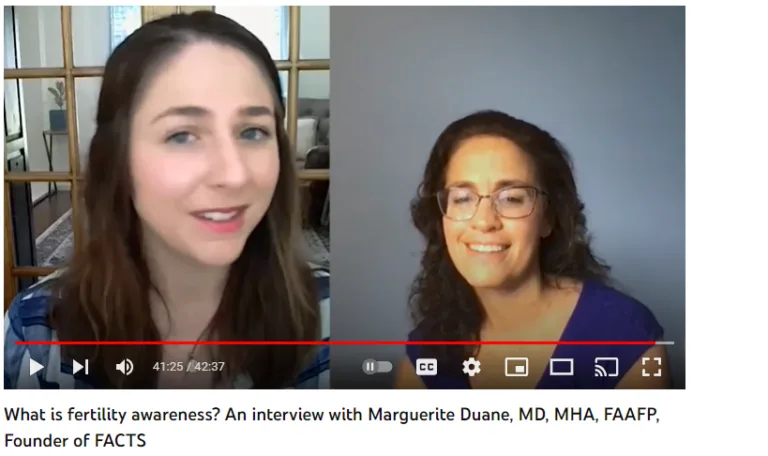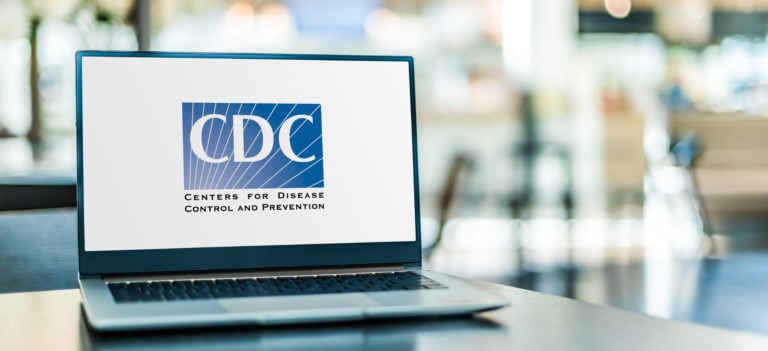What are Fertility Awareness Methods?
A fertility awareness method (FAM) is a modern, evidence-based method of charting one’s menstrual cycle, through observable biological signs unique to each woman, that helps a woman know more about her hormones, overall health, and when during her cycle she is naturally fertile or not. With the information obtained by observing and charting certain biomarkers of fertility, a woman is equipped to reach health goals with greater precision and family planning goals with high rates of effectiveness.
Is fertility awareness Natural Family Planning?
Fertility awareness methods can help a woman understand her body’s menstrual cycle and hormone health and identify and treat reproductive disorders. They can also be used as methods of natural family planning (NFP) that equip a woman to know when she is fertile and when she isn’t, at natural times in her cycle. By avoiding intercourse during periods of her cycle when she is fertile, a woman can use a FAM as a form of natural birth control, and at effectiveness rates that rival pharmaceutical birth control.
Is fertility awareness the Rhythm Method?
No. Modern FAMs or methods of NFP are observation-based (and not estimation-based or calendar-based like the antiquated rhythm method), and they use one or a combination of the following biomarkers: cervical fluid, basal body temperature, cervical position, and urine hormone measurements.
What are the differences between fertility awareness methods?
Each method is a little bit different in their “feel” in charting—some utilize colors or stamps, some have apps, some can pair with high-tech devices, and others exclusively use paper charts. No matter how high- or low-tech the method, all modern FAMs hinge on finding ovulation and therefore, the fertile window (otherwise known as the period of time a couple could potentially get pregnant if they engage in intercourse). Along with differences in charting, each method will also calculate a woman’s fertile window in a slightly different way.
Which fertility awareness method is most effective?
For obvious reasons, women often want to use the “most effective method.” But what FAM efficacy often boils down to is the method that you will use best—and consistently. It is not one-size-fits-all. What’s great about FAMs is there are many different evidence-based options available for women to choose from. No matter the FAM or method of NFP you choose, teacher support, motivation to avoid pregnancy, and partner support are the top three drivers for effectiveness. So, once you have chosen a method, make sure that you get an instructor, that your partner is on board, and that you’ve discussed your fertility goals (whether that is to get pregnant, or not).
FAM educators help women feel confident with the following:
- Determining fertile and infertile days;
- That the steps involved in their charting routine are sustainable; and
- That their needs—whether health or family planning related—will be met.
Which FAM should you choose?
The first and most important question is “What do you feel that you can commit to today?” A person’s needs, hormones, and capacities shift over the years, so what works today might not work in a year—or in five years. It’s important to take into account variables like the cost of the method, accessibility to a certified FAM educator (although these days most of them teach online!), and fitting biomarker observations and charting into their schedule.
Some women want as much objectivity as possible, so they lean toward more quantifiable biomarkers like temperature (e.g., Sympto-Thermal Method) and hormonal tests (e.g., FEMM or the Marquette Method). Other women can’t possibly commit to taking their temperature every morning, and prefer to simply track cervical mucus (e.g., the Creighton Method or Billings Method). Some women want a very basic method that requires minimum charting (such as methods that pair smart devices like the Ava bracelet or Tempdrop thermometer with a mobile or web-based app).
The good news is that there truly is an effective method (and combination of biomarkers) for each woman, and every goal or stage of fertility (from trying to avoid pregnancy or trying to conceive, to the transitional periods like postpartum or perimenopause).
Even when your cycle isn’t “textbook,” fertility awareness can still work for you
It’s easy to take a FAM class and memorize what a chart should look like. But women often face a chasm—what they experience with their biomarkers doesn’t look like the textbook. When this happens with one of my new clients during her very first cycle of charting, I give it a wait-and-see approach. I usually urge charters to chart with the method for a full three cycles before jumping to conclusions like “this doesn’t work for me,” or “I’ll never figure it out.”
In those three cycles, I hone in on cervical fluid observations (sometimes it’s simply a matter of understanding a descriptive word differently) and use a little trial and error on what feels sustainable to the charter. Sometimes in the learning phase, a woman may take on additional biomarkers that are temporary—meant to help them feel more confident. They may not want to commit to a urine hormonal test every month for the rest of the foreseeable future, but in the early stages of learning, it may give them a helpful cross-check to be sure that they are understanding other signs accurately. Usually after three cycles, most women feel confident and understand what they’re looking for, and they may be able to drop some of the additional biomarker observations they adopted as cross-checks while initially learning the method.
Troubleshooting your FAM and any issues with fertility
After three months, some women may find that things still aren’t clear. In my experience as a FAM educator, I find this is not usually part of the learning curve, but rather an obstacle between the “textbook” and “the charter.” Sort of like buying a car that won’t turn on—you keep reading the manual over and over and thinking “what am I doing wrong?” only to find that there is a crucial piece of the motor missing or defective. In these cases, it really isn’t a matter of “learning the right method,” but rather looking under the hood of the car.
Cervical fluid is the most subjective of the biomarkers—but also arguably the most important one. It’s important to take into account a woman’s reproductive age, dietary practices, and any medications she may be on. Hard-to-read cervical fluid often presents itself in two ways—abundant cervical fluid that seems never-ending, or scant, minimal cervical fluid that never seems to progress to what we would describe as “highly estrogenic” cervical fluid. These present two very different hormonal narratives—both of which should be addressed, unless of course the woman is breastfeeding or postpartum, where you can expect some significant variations from the norm in terms of cervical mucus patterns. (Fertility after birth is its own conversation separate from this one! But we have addressed this issue many times before on Natural Womanhood, in resources that can be found here.)
The benefits of FAMs for women’s health
One of the greatest advantages of using a fertility awareness method is how they can help identify hormonal imbalances and teach you more about your body than you ever could learn while on hormonal contraception. And that’s why it is crucial to have Reproductive Endocrinologists, OBGYNs, and General Practitioners well versed in fertility awareness methods. Women need a place to go when they realize something “in the car” is malfunctioning. There is great opportunity for collaboration among fertility awareness educators and medical practitioners to further advance women’s health. Organizations like FACTS about Fertility, FEMM, and Saint Paul VI Institute are doing just that.
By working with a physician who understands fertility awareness, and who can diagnose and treat any hormonal disorders, we can clear up the biomarkers that are confusing. A FAM instructor can help women have confidence in identifying their fertile/infertile days, building a sustainable charting routine, and meeting their family planning and health goals.
No matter where a woman is on her journey with fertility awareness methods or natural family planning, support is the most important piece of the puzzle in ensuring confidence and success with the method. Women and couples need support in learning FAMs and to find the right fit for what their specific needs are in that chapter of their lives. And women who are dealing with hormonal imbalances—which seem to be increasingly more common—need the medical support to diagnose and treat them.
For more information on getting started charting your cycles with a Fertility Awareness Method or method of Natural Family Planning, check out the following resources:
This page was last updated on May 16, 2024.
-

What are FAMs? A Natural Womanhood Exclusive Video Interview with Dr. Marguerite Duane, MD, of FACTS
By Grace Emily Stark • June 9, 2023“In the beginning, it might be really challenging [to learn a fertility awareness method]. [Similarly to learning to… -

Learning to love (with) Natural Family Planning
By Gerard Migeon • February 17, 2023What dozens of couples told us about their experience with NFP -

Is FAM Really Natural Birth Control?
By Cassondra Moriarty • December 18, 2021When I first got off the pill and started using a Fertility Awareness Method (FAM), it was really… -

FAM in the UK: Obstacles to fertility awareness education and restorative reproductive medical care
By Amanda Buadi • October 15, 2021As a UK-based medical doctor trained in the Creighton Model FertilityCare System and familiar with NaProTechnology, I know… -

Unpacking the effectiveness range of FAMs given by the CDC
By Rachel Wilkerson, PhD • June 25, 2021Despite a new surge of interest, fertility awareness methods (FAMs) remain a critically understudied method of family planning.… -

Don’t Trust Your Birth Control? FAM Helps With Family Planning Confidence
By Mary Rose Somarriba • April 16, 2021I frequently hear accounts from women who have great anxiety and fear about getting pregnant. They stress over… -

Thyroid Dysfunctions and Your Fertility: How FAMs Can Help You Get to the Bottom of Hypothyroidism
By Allison Jung, PA • April 16, 2021PART I Some women live with constant fatigue, very irregular cycles, and insomnia, but are never told that… -

How My Problems with Irregular Periods were Solved by FAMs (Not Birth Control)
By Taryn DeLong • January 21, 2021Many believe that fertility awareness methods (FAM) only work for women with “regular” cycles—which means they are ineffective… -

Quick Takes on 5 Common Fertility Awareness Methods To Help You Choose the Best FAM for You
By Kathleen Taylor • December 5, 2020So, you have made the decision to use a fertility awareness method (FAM). What now? Like many people, you are probably wondering,…





